Famously known as the Peach State, Georgia sits just above Florida on the East Coast with a small slip of its very own coastline on the Atlantic Ocean. The state which is known for the impressive variety of its flora and fauna boasts white-tailed deer in almost every single county, a whopping 160 bird species, and 250 tree species.
Here, we’ll discover Georgia’s largest forest. Then, we’ll take a deep dive into some of the coolest animals to be found within its vast expanse consisting of thousands of acres. Keep reading to learn more about one of the biggest forests in the eastern U.S.
The Largest Forest in Georgia: Chattahoochee National Forest

Alone, the Chattahoochee National Forest occupies around 750,000 acres.
©ChattOconeeNF, CC BY 2.0 <https://creativecommons.org/licenses/by/2.0>, via Wikimedia Commons – License
The combined Chattahoochee-Oconee National Forest is the largest forest in Georgia by far. Alone, the Chattahoochee National Forest occupies around 750,000 acres. Together with the overlapping Oconee National Forest, the two cover almost 867,000 acres of wilderness.
Located north of Atlanta and east of Chattanooga, the Chattahoochee-Oconee National Forest covers a large portion of Georgia’s northeast corner. This incredible landscape offers hundreds of miles of hiking trails, dozens of camping opportunities, and thousands of miles of pristine rivers.
What is the Largest Forest in the World?
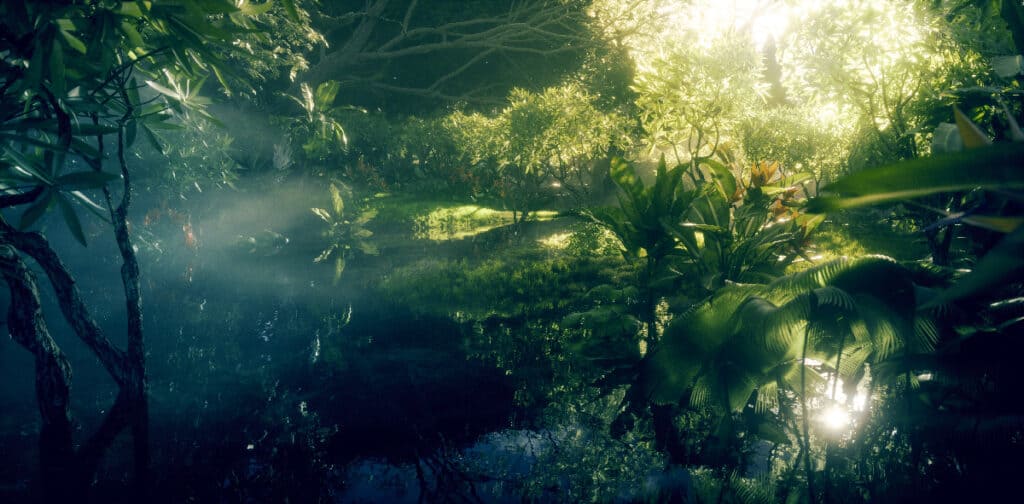
The Amazon Rainforest is the biggest forest in the world.
©iStock.com/Petmal
While the largest forest in Georgia might certainly seem impressive it is dwarfed several times over by the largest forest in the world: the Amazon forest. This immense patchwork of various ecosystems is a mind-blowing 2.6 million square miles in size. To provide extra context, it is almost the size of the contiguous United States, double India’s, and almost 30 times the size of the United Kingdom.
Although about 60% of this immense rainforest can be found in Brazil (itself just a little smaller than the United States, size-wise), the Amazon also stretches across eight other countries including Bolivia, Colombia, Ecuador, French Guiana, Guyana, Peru, Suriname, and Venezuela.
In addition to its awesome size, the Amazon also boasts astounding biodiversity and is home to some of nature’s rarest and most elusive creatures. Think the pink dolphin, the jaguar, and the spider monkey. And as if that weren’t enough, it also holds one-fifth of the world’s readily available freshwater!
What Animals Live in Georgia’s Largest Forest?
We’ve discovered the largest forest in Georgia: the Chattahoochee-Oconee National Forest. We’ve also learned what the largest forest in the world is: the Amazon Rainforest. And now, it’s time to take a look at some of the creatures that call the former home. In our list, we will be progressing in order of size. That means we will be moving from the largest to the smallest. Our list will move also be moving from mammals to avians, and then onto reptilians, and amphibians.
Large Mammals
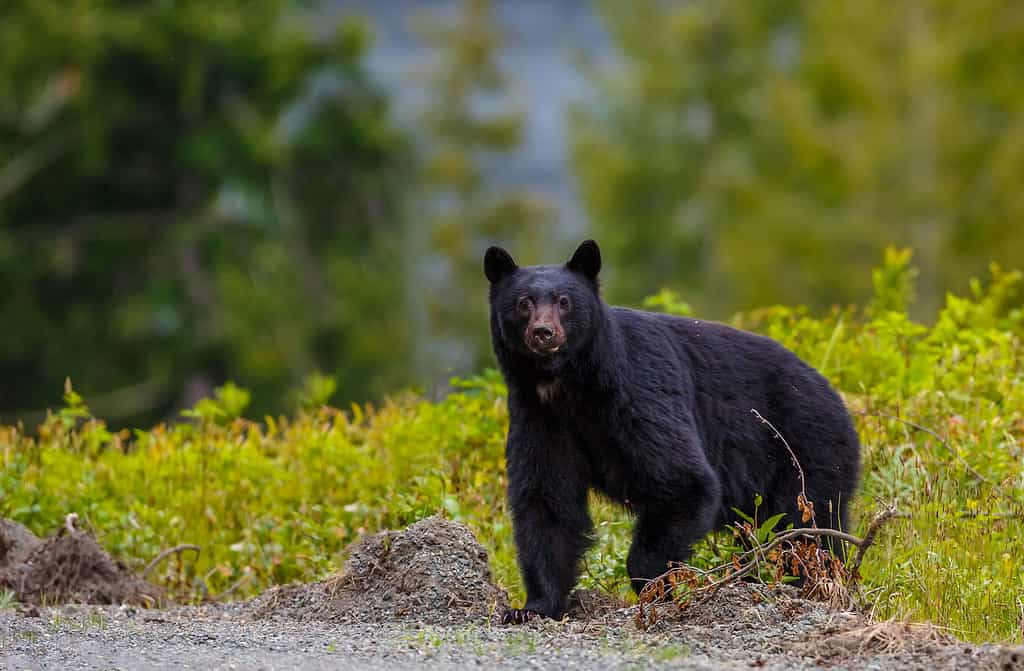
Black bears can be found the Chattahoochee-Oconee National Forest
©Menno Schaefer/Shutterstock.com
Black bears can be seen lumbering along forest paths snacking on fresh grass, and calorie-rich nuts. They also indulge their sweet tooth by tucking into berries and honeycombs. And if they are in the mood for a proteinous meal, they might pilfer bird eggs, snatch up a few bugs, or settle down to some carrion.
White-tailed deer are also common in the Chattahoochee-Oconee National Forest. These graceful cervids love twigs, leaves, fresh grass, as well as lichen and moss. Naturally, they have to keep a sharp lookout for neighboring predators which also prowl the forest. Such dangerous neighbors include menacing black bruins in search of some lunch, packs of coyotes in search of their next meal, or a famished bobcat in the mood for fresh venison.
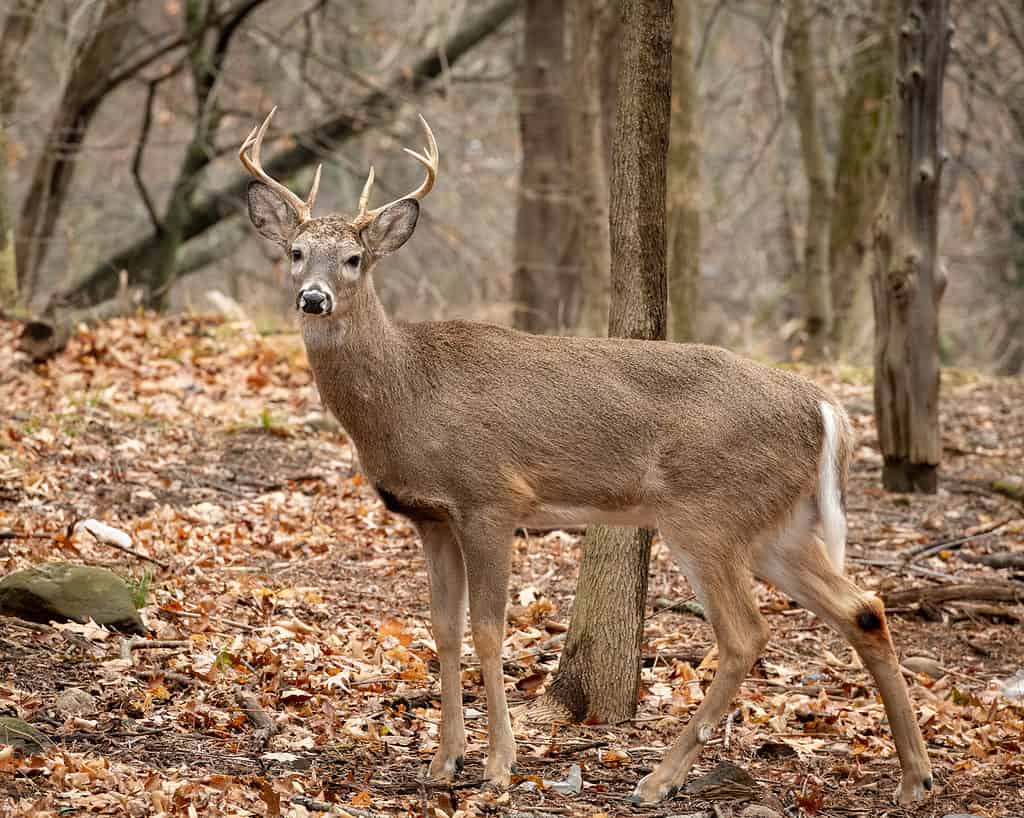
White-tailed deer are also common in Georgia’s largest forest
©Herbie Pabst/Shutterstock.com
Small Mammals
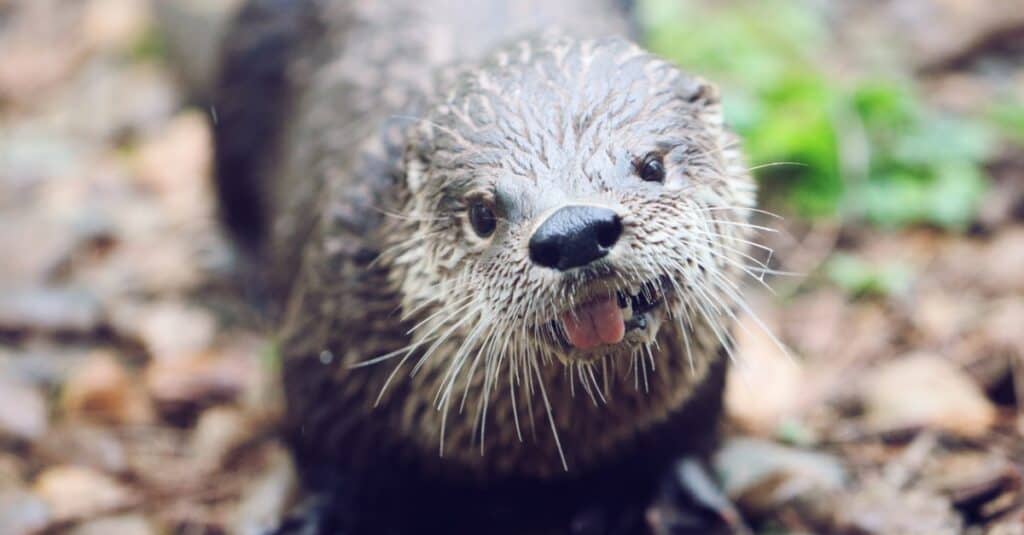
Otters can be seen swimming in the forest’s streams and rivers
©iStock.com/Heather Burditt
Small mammals are plentiful in the Chattahoochee-Oconee National Forest. Raccoons are common, though mainly seen at night due to their nocturnal natures. Lucky visitors might see river otters, muskrats, or beavers swimming in the streams. They might also catch a glimpse of a fox stalking a mouse for its dinner.
The forest is also home to 12 species of bat, including the big brown bat, eastern pipistrelle, gray bat, Indiana bat, red bat, and, Ozark big-eared bats, and Virginia big-eared bat. These flying mammals play a key role in keeping the insect population in check thanks to their ability to tuck away impressive amounts – a single bat is capable of munching more than 1,000 mosquitoes in just 60 minutes!
Birds
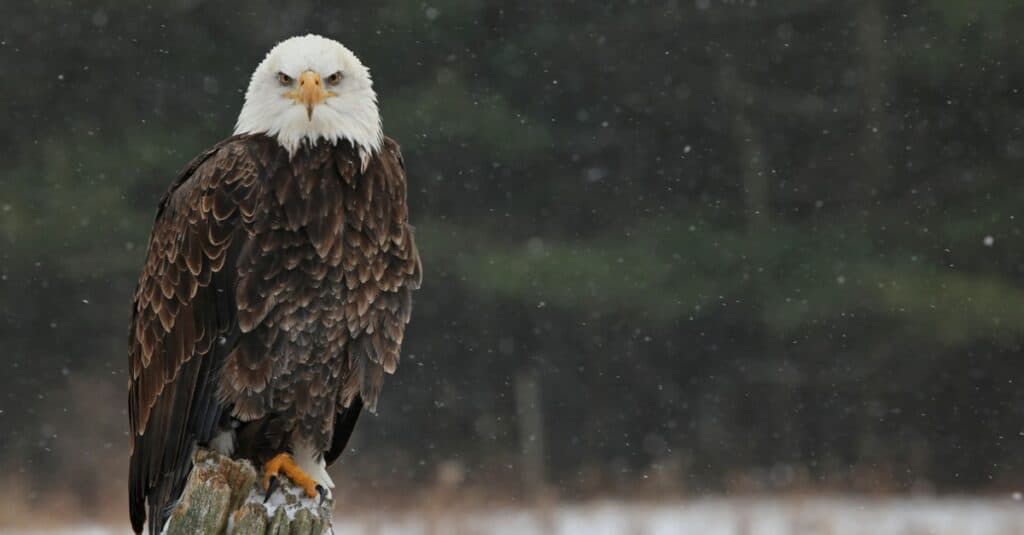
Abou 190 species of birds call the largest forest in Georgia home. The largest of these are the bald eagles.
©iStock.com/ca2hill
Here you will find about 190 avian species. Which means you might catch a glimpse of bald eagles, hawks, or owls gliding silently in search of their next victim. You might also spot cardinals or sparrows flitting from branch to branch, or even get to observe a hummingbird provide an awesome display of aerial acrobatics.
What else are you likely to find? Carolina chickadees, Carolina wrens, brown creepers, cedar waxwings, downy woodpeckers, and red-headed woodpeckers, all filling the air with their song, and the sounds of incessant pecking. Or simply helping themselves to nature’s bounty and doing their very best to stay clear of a predator’s golden gaze.
Fish, Amphibians, and Reptiles
We’ve taken a glimpse at the forest’s furry and feathered residents and next up, come its scaly denizens. The Chattahoochee-Oconee National Forest is home to a spectacular array of fish, including chubs, trout, catfish, bass, sunfish, and more. Amphibious dwellers include toads, frogs, salamanders, and newts. And, the vast lands of the forest are also home to lizards, turtles, and snakes. Among these are the venomous eastern copperhead, along with non-venomous species like North American racers and eastern kingsnakes.
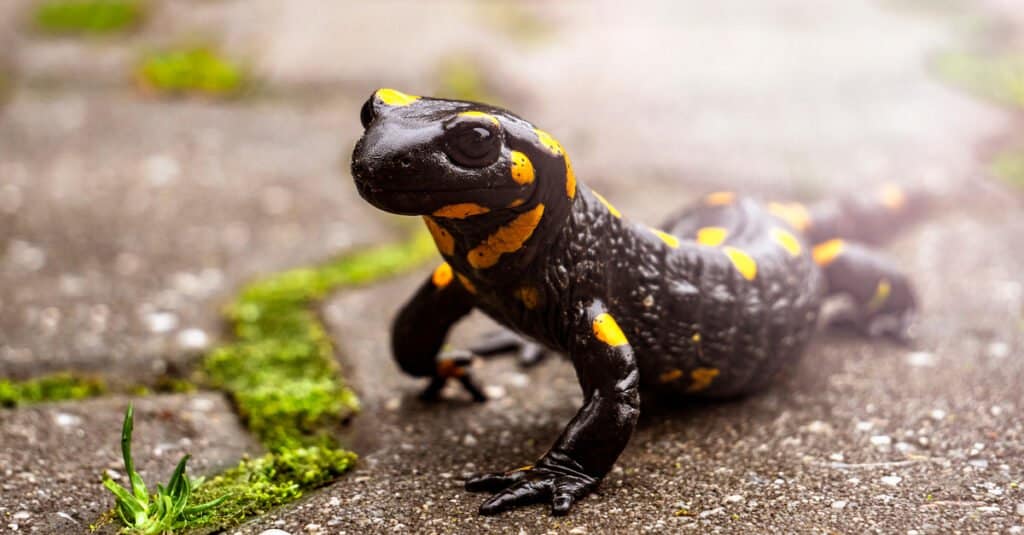
Salamanders are one of the many amphibians you might see in this forest.
©Smarteless/Shutterstock.com
All in all, the Chattahoochee-Oconee National Forests are home to an incredible variety of wildlife. And with opportunities for hiking and fishing, it might just be what you need for that special getaway surrounded by unspoilt nature.
Where is the Chattahoochee National Forest Located on a Map?
Located in Georgia, the Chattahoochee-Oconee National Forest is recognized for offering exceptional outdoor recreational activities and for harboring some of North America’s most intriguing varieties of wildlife.
Here is the Chattahoochee National Forest on a map:
The photo featured at the top of this post is © alans1948 / Flickr – License / Original
FAQs (Frequently Asked Questions)
How large is the Chattahoochee National Forest?
Alone, the Chattahoochee National Forest occupies around 750,000 acres. Together with the overlapping Oconee National Forest, the two cover almost 867,000 acres of wilderness.
What is the largest forest on the planet?
With over 2.5 million square acres of land, the Amazon Rainforest is easily the world’s largest forest. In fact, this forest is so big that, if we overlaid it over the Lower 48 States, it would cover almost all of them!
Thank you for reading! Have some feedback for us? Contact the AZ Animals editorial team.






